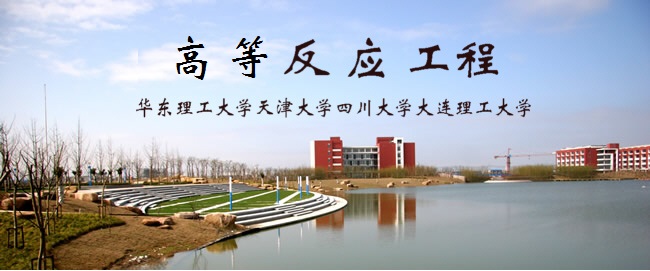
当前课程知识点:国际商务 > 十、国际商务组织 > 10.4组织变革 > 组织变革
同学们好
Helle everyone
我是云南财经大学
I am Pan xuedong from International Business School
国际工商学院的潘雪冬老师
of Yunnan University of Finance & Economics
我们继续学习本章的最后一节
Today we are continuing to study the last unit of this chapter
国际企业的组织变革
organizational change
多国企业必须阶段性地改变组织构架
Multinational firms periodically have to alter architecture to conform the changes
以适应竞争环境和战略的变化
of competitive environment and strategy
但是 组织变革很难实现
Organizations are difficult to change
因为多数组织都有很强的惰性力量
because most organizations are strong inertia-forces
惰性力量可以理解为对变革的抵触
Inertia can be understood as the resistant to change
惰性力量的主要来源有
The main sources of inertia are
1 组织内部现有权利和影响力的分配
First, the existing distribution of power and influence within an organization
因为组织变革而失去权力和影响力的人会抵制变革
those whose power and influence are reduced due to organizational change resist change
成为减缓或阻挡变革的组织惰性来源
this constitutes a source of organizational inertia that might slow or stop change
组织惰性力量的第2个来源是现有的文化
The second source of organizational inertia is the existing culture
价值体系深刻反映了员工具有的信仰 很难被改变
Value systems reflect deeply held beliefs and they can be very hard to change
组织内部正式和非正式的机制
The and informal mechanisms within an organization have been
长期强调统一的价值观
emphasizing a consistent set of values for a long period
突然要改变这些价值观
then suddenly change these values
就会引起抵制和员工之间的不协调
it leads to resistance and dissonance among employees
组织惰性力量的第3个来源是
The third source of organizational inertia might also derive form senior managers’ preconceptions
高级经理对恰当的企业模式或范式先入为主的看法
about the appropriate business model or paradigm
他们难以接受一个新的企业模式
They had difficulty accepting a new business model
使变革很困难
and made the change difficult
制度限制是组织惰性力量的第4个来源
The fourth source of organizational inertia is institutional constraints
多国企业发现这些限制使得公司
A multinational may find that these constraints
很难采用最有效的战略和组织构架
make it very difficult to adopt the most effective strategy and architecture
虽然所有的组织都会遭受惰性的困扰
Although all organization suffer from inertia
但产业全球化的趋势使得组织变革显得尤为关键
the trend toward globalization has made organizational change more critical
许多跨国企业只能知难而进
than ever that many multinationals do just that
组织变革成功的基本原则可以归纳为
The basic principles for successful organizational change can be summarized as follows
1 为组织解冻
1 unfreeze the organization
2 迈向新状态
2 move the organization to a new state
3 重新冻结组织
3 refreeze the organization
由于惰性力量的存在
Because of inertia forces
渐进的变革通常等于没有变革
incremental change is often no change
尤其是权力收到威胁的人
Those whose power is threatened by change
很容易抵制渐进的变革
can too easily resist incremental change
这便提倡有效的变革需要及早采取大胆行动
this leads to effective change requiring to take bold action
让组织已成型的文化“解冻”
early to “unfreeze” the established culture of organization
改变权力和影响力的分配
and to change the distribution of power and influence
解冻组织使用的休克疗法包括
Shock therapy to unfreeze the organization include
关闭经营不善的工厂
the closure of plants deemed uneconomic
或宣布大幅度结构重组
or the announcement of a dramatic structural reorganization
要想顺利推进组织解冻
Senior managers must also practice what they preach
高级经理需要投身其中 身体力行
and take the necessary steps to push organization unfreeze smoothly
组织一旦被解冻
Once an organization has been unfrozen
就必须迈向一个新的状态
it must be moved to a new state
企业需要采取行动---停止运营
Movement requires taking action—closing operations
进行结构重组
reorganizing the structure
重新分配任务
reassigning responsibilities
改变控制
changing control
激励和奖励机制
incentive and reward systems
重新设计流程
redesigning processes
迈向新状态要求
Movement requires a substantial change
多国企业的组织构架发生实实在在的变化
in the forms of a multinational’s organizational architecture
以符合想要达到的新战略高度
so that it matches the desired new strategic posture
让员工投身于变革是一种极好的方法
Involving employees in the change effort is an excellent way
可以他们体会到变革的必要性
to get them to appreciate and buy into the needs for change
从而加快前进的步伐
and to help with rapid movement
重新冻结组织需要更长的时间
Refreezing the organization takes longer
可能要求建立一种新的文化
it may require that a new culture be established and employees be socialized
这要求员工逐渐习惯新的做事方式
into the new way of doing things
公司可以采用管理教育课程来做到这一点
Companies often use management education programs to achieve this
但是管理教育还远远不够
However, management education programs are not enough
招聘政策必须改变
Hiring policies must be changed to emphasis on hiring individuals
强调被录用人员的价值观应与公司新文化相一致
whose own values are consistent with that of the new culture
控制和奖励机制必须与新现状相符
Controlling and rewarding mechanisms also must be consistent with the new state
这一节的内容就是这些 感谢大家的参与
That’s all for today and thank you for your participation
-1.1 全球化的概念和内容
-1.2 全球机构和全球化的推动力
-1.3 全球经济的变化和逆全球化的动因与现象
-第一章课后练习
-2.1 政治体制
--政治体制
-2.2 经济体制
--经济体制
-2.3 法律体系
--法律体系
-2.4 经济发展的决定因素
-2.5 经济转型的本质和经济变革的意义
-第二章课后练习
-3.1 跨文化差异的本质和影响因素
-3.2 跨文化差异的影响因素、文化维度和文化演进
-3.3 商务伦理问题的本质、起因和哲学路径
-第三章课后练习
-4.1区域经济一体化的概念及层次
-4.2区域经济一体化的争论
-第四章课后练习
-5.1国际贸易理论
--国际贸易理论
-第五章课后练习
-6.1国家干预国际贸易的原因
-6.2国家干预国际贸易的措施
-第六章课后练习
-7.1投资的现状
--投资的现状
-7.2投资的理论
--投资的理论
-7.3投资利弊与政府干预
-第七章课后练习
-8.1外汇市场
--外汇市场
--外汇市场案例学习
--外汇市场案例分析
-8.2货币体系
--货币体系
-8.3全球资本市场
--全球资本市场
-第八章课后练习
-9.1国际企业的战略
--国际企业的战略
-9.2战略目标
--战略目标
-9.3环境压力
--环境压力
-9.4战略选择
--战略选择
-第九章课后练习
-10.1组织构架与组织结构
-10.2控制、奖励、流程与文化
-10.3战略与组织构架
--战略与组织构架
-10.4组织变革
--组织变革
-第十章课后练习
-11.1市场进入战略
--市场进入战略
-11.2战略联盟
--战略联盟
-第十一章课后练习
-12.1进出口贸易与对等贸易
-第十二章课后练习
-13.1产品策略和分销策略
-13.2沟通策略、定价策略和新产品研发
-第十三章课后练习
-14.1全球生产与供应链管理
-第十四章课后练习
-15.1国际人力资源管理的作用
-15.2人员配备、培训与管理
-15.3业绩评估与薪酬
--业绩评估与薪酬
-15.4国际劳工关系
--国际劳工关系
-第十五章课后练习
-16.1国际会计
--国际会计
-16.2国际企业财务管理
--国际企业财务管理
-第十六章课后练习

